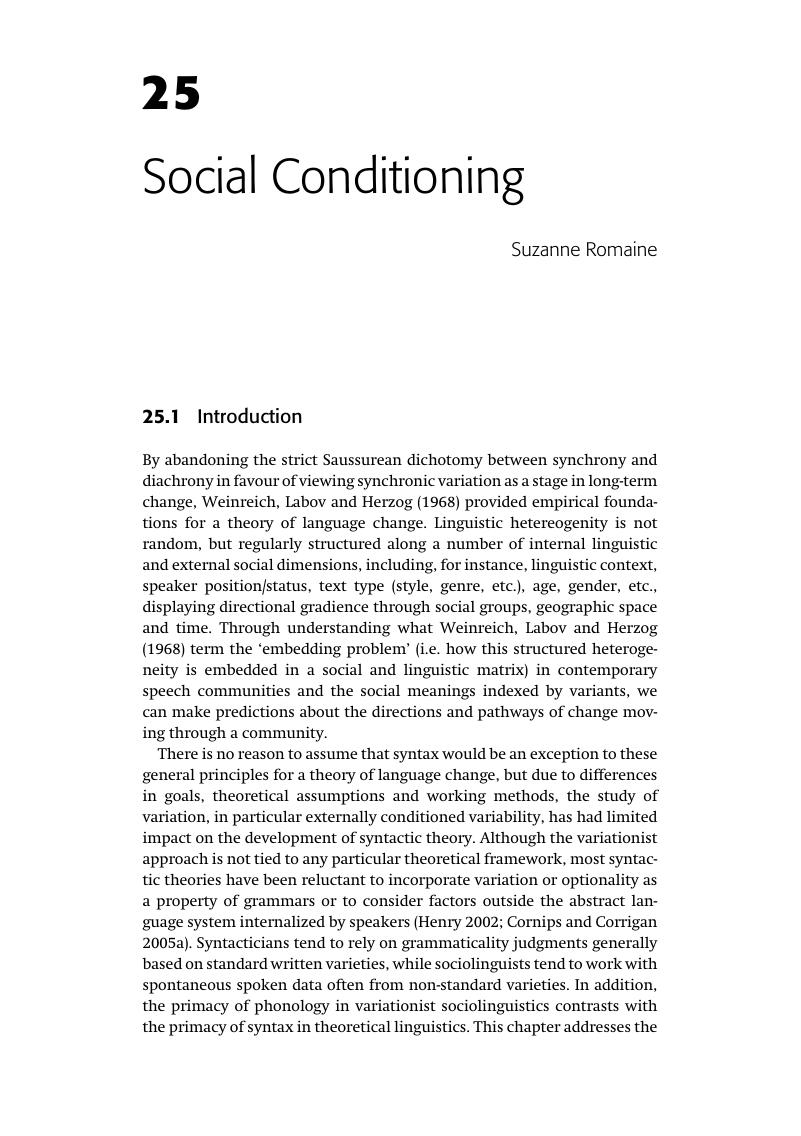Book contents
- The Cambridge Handbook of Historical Syntax
- Cambridge Handbooks in Language and Linguistics
- The Cambridge Handbook of Historical Syntax
- Copyright page
- Contents
- Figures
- Tables
- Contributors
- Abbreviations
- Introduction
- Part I Types and Mechanisms of Syntactic Change
- Part II Methods and Tools
- Part III Principles and Constraints
- Part IV Major Issues and Themes
- Part V Explanations
- 23 Endogenous and Exogenous Theories of Syntactic Change
- 24 Imperfect Transmission and Discontinuity
- 25 Social Conditioning
- 26 Non-syntactic Sources and Triggers of Syntactic Change
- Part VI Models and Approaches
- Index
- References
25 - Social Conditioning
from Part V - Explanations
Published online by Cambridge University Press: 28 April 2017
- The Cambridge Handbook of Historical Syntax
- Cambridge Handbooks in Language and Linguistics
- The Cambridge Handbook of Historical Syntax
- Copyright page
- Contents
- Figures
- Tables
- Contributors
- Abbreviations
- Introduction
- Part I Types and Mechanisms of Syntactic Change
- Part II Methods and Tools
- Part III Principles and Constraints
- Part IV Major Issues and Themes
- Part V Explanations
- 23 Endogenous and Exogenous Theories of Syntactic Change
- 24 Imperfect Transmission and Discontinuity
- 25 Social Conditioning
- 26 Non-syntactic Sources and Triggers of Syntactic Change
- Part VI Models and Approaches
- Index
- References
Summary

- Type
- Chapter
- Information
- The Cambridge Handbook of Historical Syntax , pp. 534 - 555Publisher: Cambridge University PressPrint publication year: 2017



